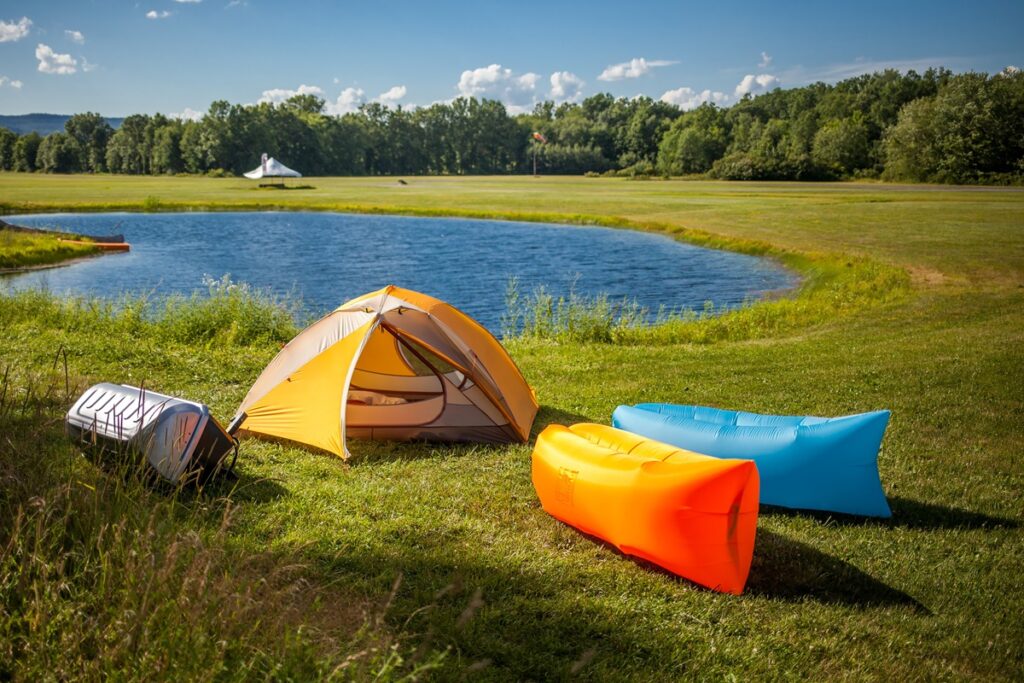I’ll never forget the bone-chilling night I spent in my 3-season tent during an early spring backpacking trip.
Even bundled in layers inside my winter sleeping bag, I shivered uncontrollably until sunrise. My recreational tent wasn’t built to insulate during freezing temps.
After that miserable experience, I knew it was time to invest in a rugged and ultra-warm four-season tent for sale perfect for cold-weather camping.
How Season Ratings Compare
Tents built specifically for winter are dubbed “4-season” while recreational tents for spring through fall are called “3-season”. These labels indicate the conditions and temperatures each tent type can withstand.
3-season tents have breathable mesh panels and thinner fabric engineered to be lightweight and ventilated. They typically provide livable shelter in temps ranging from 10°F to 80°F.
- 4-season tents swap mesh for solid panels and are constructed with thicker, heavier materials to block wind and seal in body heat. Most handle a wider range from -10°F up to 80°F thanks to superior insulation.
So in direct comparison, 4-season tents have colder temperature thresholds hence why they keep occupants warmer. But the devil is in the details, so let’s analyze other critical factors that boost warmth.
Specialized Design and Construction
From clever shape innovations to tiny fixtures that prevent heat loss, true 4-season shelters utilize every design trick to maximize insulation and weather resistance.
Dome vs Tunnel
- Dome-shaped tents like my 3-season model offer lots of livable space but have sloped sides that shed snow poorly. By contrast, tunnel or chimney-shaped winter tents have near vertical walls that prevent snow pile-up.
- The result is 4-season tents have more covered headroom during storms so you stay drier and warmer.
Double Wall Construction
- Basic 3-season tents use single walls with waterproof coatings on the interior. But coated fabrics don’t breathe well, allowing interior moisture to accumulate.
- 4-season tents add a waterproof rain fly outer layer with a breathable inner tent for better ventilation and temperature regulation.
4-season tent design elements that boost insulation
Guy Lines & Anchors
- To withstand heavy snow loads and wind, 4-season tents have exponentially more guy lines, anchors, and tie-down points than flimsier models.
- The industrial-strength reinforcement creates an impenetrable thermal cocoon.

Premium Materials Resist Elements
From premium waterproofing coatings to unbreakable pole systems, manufacturers only use the most rugged materials engineered for Everest-like extremes to construct proper 4-season shelters.
Waterproof Fabrics
- Standard polyester tents soak moisture and lose insulating value when wet. By comparison, premium 4-season fabrics like the Ripstop nylon/polyester weave are waterproof and retain 85% warmth when soaked.
- Advanced coating technology like OutDry extreme laminate external layering adds an almost impenetrable moisture barrier.
Unbreakable Poles
- Recreational tent poles are thin aluminum or fiberglass prone to snapping. 4-season poles utilize flexible but robust Easton Syclone aluminum that won’t fracture under heavy snow accumulation.
- Unbreakable poles retain structure keeping you drier and warmer.
The bottom line is that 4-season tents utilize heavy-duty, weatherproof materials specifically designed to insulate during freezing temperatures and block wind, snow, and moisture far better than typical recreational tents.
My Take: Invest in 4-Season Quality
Maybe you won’t camp in subzero temps but the premium construction and bombproof materials used for 4-season tents boost comfort and weather resistance across the board.
If your recreational tent leaves you shivering on cooler nights or wets out during rain and snowstorms, upgrading to a legit winter model is a smart long term investment for 3-season adventures.










